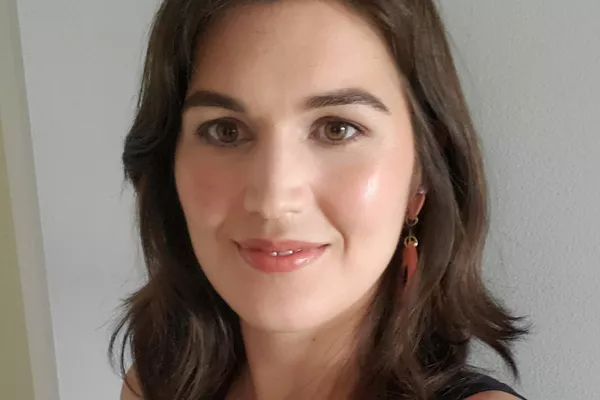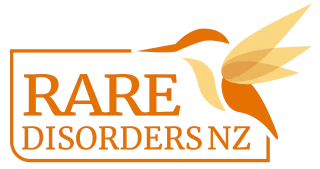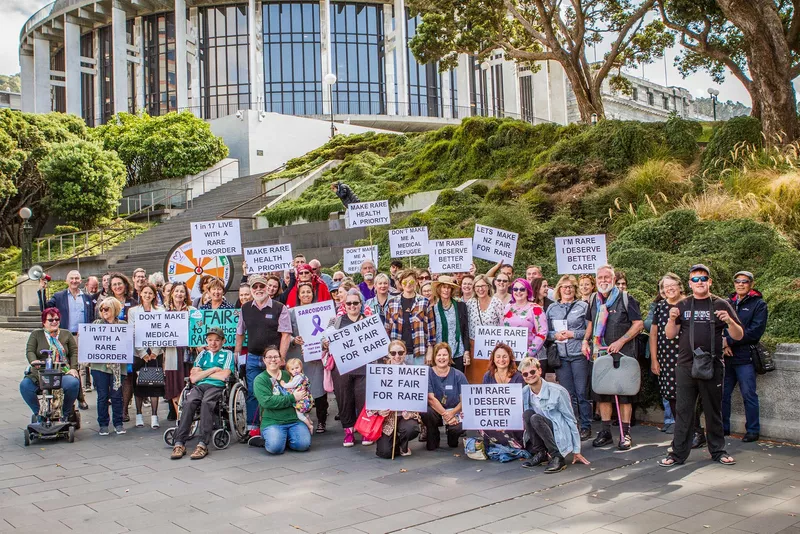Kayla's story
6 Sep 2023
“This disease is like a sleeping dragon,” the doctor said. “You might have periods of remission, when the dragon sleeps, but it will wake again and you will flare. You’re going to have to adapt your life to manage this illness.”
I cried very briefly in the car, then wiped my face and drove home to my infant son. I’d always known I was developing some form of arthritis, I just didn’t think it would come this early. Age 30, struggling to walk. Struggling to hold my baby.
I didn’t know it then, but my ultimate diagnosis was in many ways, worse than the doctor’s initial presumption of Rheumatoid Arthritis. While at first my only symptoms were inflammatory arthritis, over time the dragon reared its ugly head and the inflammation spread from my joints to my entire body.
That day my doctor had inadvertently foreshadowed the disease I would be diagnosed with 5 years later - Adult Onset Stills Disease (AOSD/Stills) – known as “the dragon” by its afflictees, due to its high fevers and other extreme symptoms that flare up suddenly and “go to sleep” just as quickly.
According to StillsNow, “AOSD is a systemic inflammatory disease that typically afflicts young adults. It is characterized by spiking daily fevers, intermittent rashes, and chronic arthritis in multiple joints. Common features include a sore throat (during the onset), prodromal sore throat (70%), weight loss (> 10% body weight), lymphadenopathy, hepatomegaly, splenomegaly, pleuritis and pericarditis and labs suggestive of excessive inflammation.”
With the prevalence rate estimated to be in the range of 1–34 cases per million people, Stills is rare – and like many rare diseases, it is poorly understood within the medical community and good information is hard to come by. In fact, most doctors I’ve spoken to are not familiar with it, and that is one of the reasons I fought for 12 years to be diagnosed.
While web searches often reveal a somewhat diluted description of the disease, feedback from the online Stills community reveals a more brutal reality. This is largely due to many of us not having our disease adequately managed, and also due to long-term complications and a ‘cascade’ effect of drug side effects, the development of additional autoimmune or autoinflammatory conditions, and permanent joint and organ damage. For many of us early ‘medical retirement’ is not just a possibility, but a certainty.
With 5 and 10-year mortality rates estimated at 8% and 13% respectively, Stills can also be deadly – which, alongside quality of life, is another reason why effective treatment is so important. However like with many rare diseases, obtaining suitable medication is not that straight-forward.
The first obstacle is that New Zealand uses “step therapy” or “fail first”. That means that you have to try (and fail) all the cheap medicines before you can try the expensive (and often, better) ones. I’m currently trialling my sixth medication, with no success yet. I have one funded medication left to trial.
Medication options in New Zealand are also limited. While corticosteroids are effective in controlling flares, they are not safe for long-term use therefore other immunosuppressants are recommended as a primary medication to control disease. IL-1 inhibitors (canakinumab, anakinra) and IL-6 inhibitors (tocilizumab, sarilumab) are considered to be the most effective in treating the disease; only one of which (tocilizumab) is funded in New Zealand.
Sometimes, other DMARDS and biologics such as methotrexate, amgevita or etanercept can help – but even then, often those drugs stop working after a period of time – months or years. That’s why having multiple drug options available is important to the long-term management of our disease. As a 35-year-old with two children to raise, I’d like to have more than one ‘hail Mary’ left in terms of treatment options, and I’m sure I’m not the only one.
It's frightening to not know how sick I will be from one day to the next, or when, and if effective treatment will be available to me. It leaves me unable to plan, unable to grieve, and fearing the worst for both myself and my family’s future. These are feelings very few people except those also suffering from chronic illness can truly understand.
I’ve observed that chronic illness seems to exist in a strange ‘grey area’ between acute illness and visible disabilities. In my experience, people with chronic illness are often perceived with contempt and disbelief, by both friends and family as well as medical professionals. Peoples compassion and patience for health issues seems to be inversely correlated with the duration of illness. After a while, there’s a perception that you are malingering, or that you should just ‘get on with it’. And as people’s apathy and frustration with us increases, so too does our physical and emotional suffering as our illnesses worsen over time.
It forces us to deny the reality of our illness, often ‘pushing through’ more than we should, not asking for help or accommodations, while simultaneously internalising our perceived shortcomings as somehow personal, as opposed to situational. Many of us live with a lot of guilt and shame on top of the pain, fatigue and stress of managing a physical illness and the psychological, financial and relational repercussions. It’s no wonder that over the past few years of working while raising two young children and largely trying to hide my illness and chronic pain that I’ve felt myself go through something I can only describe as emotional calcification.
The glimmer of light for me has been the online chronic illness community and the depth of compassion found therein. We don’t have to have the same illness to understand each other’s struggles; I have connected with people with fibromyalgia, autoinflammatory disease, rheumatoid arthritis, and many other autoimmune diseases. I have developed a deep concern and compassion for anyone without a diagnosis and treatment. That’s one of the reasons why I’m currently working with Rare Disorders NZ to begin campaigning for Pharmac to fund Canakinumab and Anakinra in New Zealand. These two drugs will benefit many individuals with Stills and SJIA, as well as other autoinflammatory diseases like FMF and CAPS, and even those with rheumatoid arthritis not responding to presently available medications.
Because September 7th is Stills Disease Awareness Day, I invite you to consider donating to Rare Disorders NZ so that they may continue helping me and other individuals with rare diseases to fight to obtain the medications we need. If you would like to assist us in campaigning to have Anakinra and Canakinumab funded in New Zealand, please contact Rare Disorders NZ directly.


